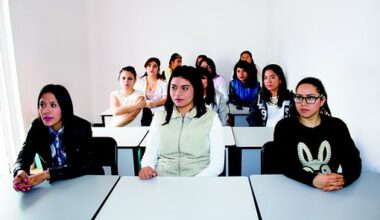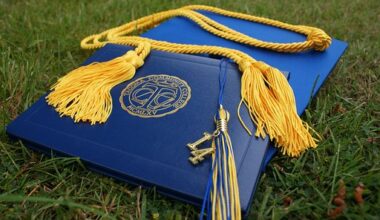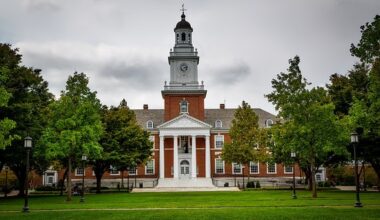Study there in the USA. happy news The Stamps Scholarship at University of Miami is currently available. We will go into great detail regarding this scholarship in this article, along with its advantages and step-by-step instructions for applying.
An undergraduate scholarship for international students, the University of Miami Stamps Scholarship 2023–2024 is completely supported. This scholarship provides $12,000 for undergraduate research and conferences in addition to full tuition, typical room and board, textbooks, a one-time stipend for the purchase of a computer, and standard room and board.
In collaboration with the Stamps Scholars program, the University of Miami is offering multi-year scholarships to help talented and ambitious students achieve their educational and personal goals.
Stamps Scholars pursue their academic objectives while enhancing their managerial skills thanks to merit-based financial assistance, which also includes resources for studying abroad, participating in social activities, undertaking research projects, and other educational endeavors.
Apply in China as well for an opportunity to study at institutions like Shanghai Jiao Tong University, Tianjin University, Harbin Engineering University, and University of Jinan, among many more.
The University of Miami Scholarship Weekend is open to selected applicants for the Stamps Scholarship. During this summer program, candidates will interact with University of Miami professors and contemporary academics.
The best and brightest students will be informed about the distinctive educational and leadership possibilities available at the University of Miami by scholarship applicants and their families. Miami University’s entrance is filled with commercialism. Applications are evaluated based on the rigor of their high school coursework and grades, as well as their performance on standardized tests, advice cards, essays, extracurricular activities, and prizes and rewards.
Summary of the Scholarship
- Study Level: Undergraduate
- Florida International University
- in the USA
Courses Provided:
- Accounting
- studies in business
- Art
- Biology
- Aquatic Science
- Athletic Science
- Engineering, Civil
- Computing Science
- Fitness and Wellness
- Engineering for the Sea
- Program Duration: 4 years (eight semesters).
- Deadlines: November 1, 2022 and January 1, 2023 (Annually)
Benefits and Coverage of Scholarships
The Stamps Scholarship at the University of Miami offers the following advantages to its recipients:
- tuition and fees in full
- standard lodging and meals
- Textbooks
- access to a growing network of Stamps Scholars at 40 universities nationwide as well as participation in the twice-yearly Stamps Scholars National Convention.
- a one-time payment towards the cost of a computer
- Access to a $12,000 enrichment fund which may be used toward study abroad, undergraduate research, unpaid internships, conferences, leadership development, and other educational purposes mutually agreed upon by the University of Miami and Stamps Family Charitable Foundation*.
- At the beginning of the school year, Stamps Scholars Orientation is held.
- Throughout the academic year, Stamps Scholars offers educational and leadership programs and opportunities.
- Also Examine Finding employment in Japan after graduating
Eligibility Criteria for University of Miami Stamps Scholarship
To be eligible for University of Miami Stamps Scholarship, these points should be considered:
- Required Languages: English
- Eligible Countries: All World Countries
- Admission to the University of Miami is very competitive. Applicants are considered based on the strength of their high school curriculum and grades earned, standardized test scores, letters of recommendation, essay, extracurricular activities, and awards/achievements.
- The Scholarship Committee will make the final determination on all scholarship awards.
- To be eligible for academic scholarships, international candidates must submit a complete application for admission with all academic credentials, including a bank letter by the deadline listed below.
Applicants Must have : - Official test scores from the Test of English as a Foreign Language (TOEFL) or the International English Language Testing System (IELTS).
General Secondary Certificate of Education.
Also check Fully Funded Orange Knowledge Programme and avail the opportunity to study in Netherlands.
How to Apply for University of Miami Stamps Scholarship?
Please follow below steps to avail University of Miami Stamps Scholarship:
Complete and submit the Common Application online
Send the following documents on the address given on the official
Official website:
Official Transcripts
Official English Test Scores
Letter of Recommendation
Submit Your Financial Aid Documents.
Check Your Application Status.
Official Website
To know more about University of Miami Stamps Scholarship, please visit official website:
https://admissions.miami.edu/undergraduate/financial-aid/scholarships/index.html
Our Story
The University of Miami is a private research university with more than 10,000+ full-time, degree-seeking undergraduates and 6,000 full-time, degree-seeking graduates from around the world. Here, students study what they love, collaborate across disciplines, and tackle real-world challenges. Our vibrant community is made up of students and scholars from all over the world that challenge each other to push beyond their limits and achieve more.
The University of Miami was chartered in 1925 by a group of citizens who felt an institution of higher learning was needed for the development of their young and growing community. The South Florida land boom was at its peak, resources appeared ample, optimism flowed, and expectations were high. Supporters of the institution believed that the community offered unique opportunities to develop inter-American studies, to further creative work in the arts and letters, and to conduct teaching and research programs in tropical studies.
Early Years
By the fall of 1926, when the first class of 646 full-time students enrolled at the University of Miami, the land boom had collapsed, and hopes for a speedy recovery were dashed by a major hurricane. In the next 15 years the University barely kept afloat. The collapse in South Florida was a mere prelude to a national economic depression. Such were the beginnings of what has since become one of the nation’s most distinguished private universities.
The University survived primarily due to the vision and persistence of its first president, Dr. Bowman F. Ashe (1926-52). Under his administration, the institution overcame bankruptcy, a reorganization, a world war, and then in the post-war years, experienced tremendous growth and expansion.
When the University opened in 1926, it consisted of the College of Liberal Arts, the School of Music, and the Evening Division. During the Ashe presidency, the University added the School of Law (1928), the School of Business Administration (1929), the School of Education (1929), the Graduate School (1941), the Marine Laboratory (1942; presently the Rosenstiel School of Marine and Atmospheric Science), the School of Engineering (1947), and the School of Medicine (1952).
The 1950s-1970s Dr. Jay F. W. Pearson assumed the presidency in 1953. A marine biologist by training, charter faculty member, and an assistant to President Ashe since 1929, Dr. Pearson presided during a decade of unprecedented growth. Total enrollment stood at over 10,000 in 1953 and increased to nearly 14,000 by the end of the Pearson presidency in 1962. New facilities and resources were added to keep pace with student enrollment as well as to increase the research strength of the institution. The University also added an undergraduate honors program, expanded the graduate programs to the doctoral level in a dozen fields, established a core curriculum for undergraduates, and vastly increased its research activity.
The University entered a new epoch, a time of reexamination and consolidation under its third president, Dr. Henry King Stanford (1962-81). Stanford’s presidency was marked by further emphasis on research activity, additions to physical facilities, and reorganization of the University’s administrative structure. Several research centers and institutes were established, including the Center for Advanced International Studies (1964), the Institute of Molecular and Cellular Evolution (1964), the Center for Theoretical Studies (1965), and the Institute for the Study of Aging (1975).
1980s
In 1981, Edward T. Foote II became its fourth president. Under his leadership, the University was elected to membership in Phi Beta Kappa, the nation’s oldest and most prestigious honor society; three new schools were created—Architecture, Communication, and the Graduate School of International Studies along with its research component, the North-South Center; average SAT scores of incoming freshmen increased by nearly 100 points; and the University began and completed a series of renovations that converted standard student dormitories into a system of residential colleges.
In addition, Foote was the catalyst behind the creation of the University’s strategic plan, a blueprint for the acceleration of the University’s excellence. A five-year $400 million Campaign for the University of Miami, launched in 1984, surpassed its goal in April 1988 and ended with a $517.5 million commitment.
The 21st Century and Today
The University entered its present phase in 2001 when Donna E. Shalala became its fifth president. President Shalala was the longest serving Secretary of Health and Human Services in U.S. history. She served in the Clinton Administration from 1993-2000 and oversaw a $600 billion budget. Prior to that, she was Chancellor of the University of Wisconsin – Madison for six years, the first woman ever to head a Big Ten University. President Shalala also served as president of Hunter College, The City University of New York, for seven years. President Shalala, who spearheaded extraordinary progress in all areas, stepped down as president in May 2015.
On October 16, 2003, the University announced Momentum: The Campaign for the University of Miami, the most far-reaching and ambitious comprehensive campaign in its history. The historic fundraising drive surpassed its $1 billion goal in January 2006, a year and a half ahead of schedule, and the University established a new goal to raise an additional $250 million by the end of 2007. The campaign came to end December 31, 2007, having raised $1.4 billion‹making UM the first university in Florida to successfully mount a billion-dollar campaign.
For the sixth year in a row the University of Miami was ranked in the top 50 in U.S. News & World Report’s annual Best Colleges issue. In the 2015 report, UM is ranked No. 48 in the National Universities category. Under President Shalala’s leadership the University experienced an extraordinary rise in these popular rankings, up from No. 67 in 2001. U.S. News also listed several UM graduate programs in its 2014 America’s Best Graduate Schools rankings.
In 2012 the University publicly launched Momentum2: The Breakthrough Campaign for the University of Miami, a $1.6 billion initiative to support academic resources, learning opportunities, and strategic initiatives throughout the University. The campaign goal was reached in May 2015.
In Fall 2014 the University enrolled 16,774 students in 115 bachelor’s, 104 master’s, and 63 doctoral programs. Student selectivity for incoming freshmen continues to be highly competitive, with a mean SAT score of 1320; about half graduated in the top 5 percent of their high school class and 66 percent graduated in the top 10 percent. Enrolled students represent all 50 states and 121 other countries. UM alumni live in all 50 states and 154 countries; more than 49,000 in Miami-Dade County.
In April 2015 Dr. Julio Frenk, dean at the Harvard T.H. Chan School of Public Health and Mexico’s former minister of health, was named the University’s sixth president. A noted leader in global public health and a renowned scholar and academic, President Frenk assumed the presidency on August 16. The University’s first Hispanic president, Frenk views Miami as uniquely positioned as a gateway to Latin America and the Caribbean, and the University to be a leader in discourse throughout the hemisphere and beyond.
APPLY HERE NOW
Originally posted 2022-11-27 12:31:01. Republished by Blog Post Promoter






